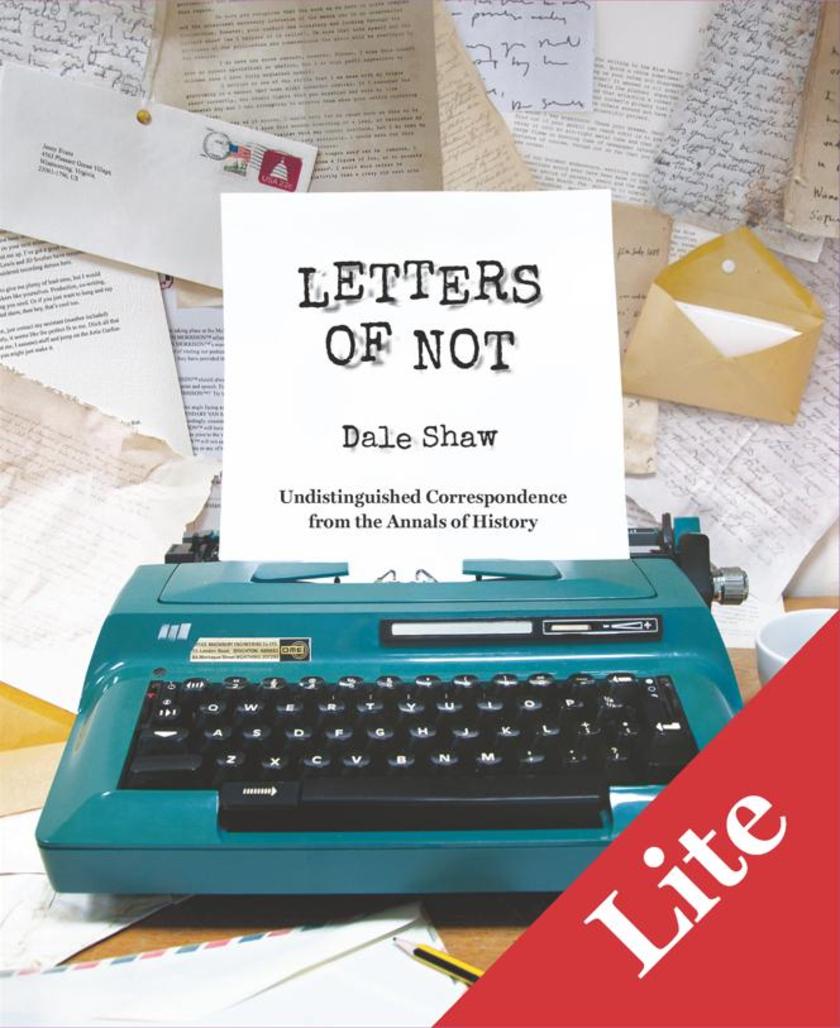
Letters of Not Lite
¥22.66
A text-only edition of the hilarious Letters of Not. A collection of remarkable and completely made-up correspondence from the great and the good across history. Many books have collated the exceptional letters and personal writing of the famous, offering a fascinating insight into well-known figures’ personal lives and hidden desires. But what of the undistinguished epistles of the renowned? Can their less auspicious musings divulge clues to their hopes and ambitions? Probably not. But they can be quite funny. ‘Letters of Not’ assembles the fictional jotted dross that was never before considered worthy of collection. The Post-it notes, the shopping lists, the failed limericks and the birthday card sentiments of history’s most celebrated sons and daughters. This ‘lite’ edition contains 6 never before seen letters. Inside you will find: Werner Herzog’s impassioned note to his cleaning lady Patti Smith’s gym application Captain Scott’s other last letter to his wife Salvador Dali’s to do list Mark E. Smith’s audio tour of Ripon Cathedral Harold Pinter greetings cards Pope Benedict’s handover notes James Joyce’s out of office Dr Heimlich’s other manoeuvre A letter from the table next to the Algonquin Round Table Tweets from the 1966 Newport Folk Festival Instructions on what to do when you meet Van Morrison And many more, beautifully rendered in their original, blatantly falsified glory and hilariously transcribed for your pleasure.

How to Relax Without Getting the Axe
¥77.49
If business is a hamster wheel, what kind of hamster do you want to beThe one who runs all day long, huffing and puffing to keep things turningOr the sleek and happy rodent who works in the corner office down the hallStanley Bing has seen the way the big furballs operate in good times and bad.Core skills taught in this book:DelegationTelling people what to do and having them do it.AbsenceOperating from the digital vacuum.Abuse of statusIt can be done.DecisivenessEven when confused.EngagementBut only when necessary.Step off the wheel.Grab this book.And relax.
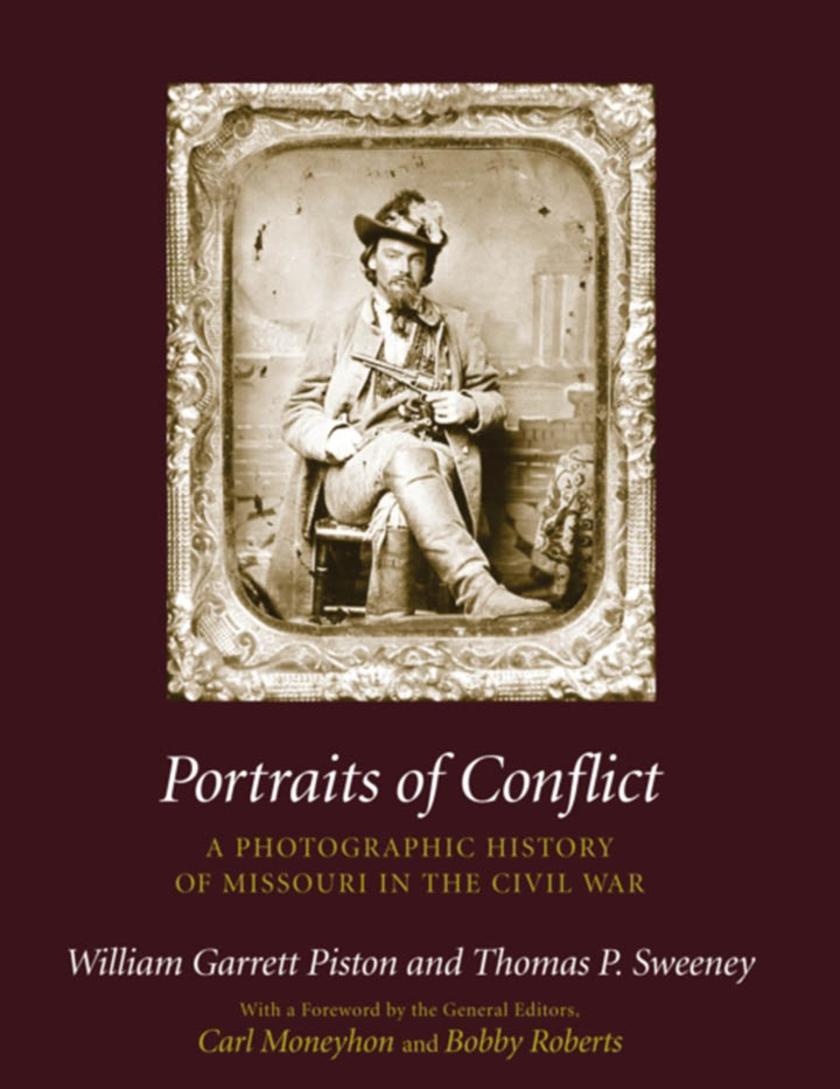
Portraits of Conflict
¥484.91
A deeply divided border state, heir to the "Bleeding Kansas" era, Missouri became the third most fought-over state in the war, following Virginia and Tennessee. Rich in resources and manpower, critical politically to both the Union and the Confederacy, it was the scene of conventional battles, river warfare, and cavalry raids. It saw the first combat by organized units of Native Americans and African Americans. It was also marked by guerrilla warfare of unparalleled viciousness. This volume, the ninth in the series, includes hundreds of photographs, many of them never before published. The authors provide text and commentary, organizing the photographs into chapters covering the origins of the war, its conventional and guerrilla phases, the war on the rivers, medicine (Sweeny's medical knowledge adds a great deal to this chapter and expands our knowledge of its practice in the west), the experiences of Missourians who served out of state, and the process of reunion in the postwar years.
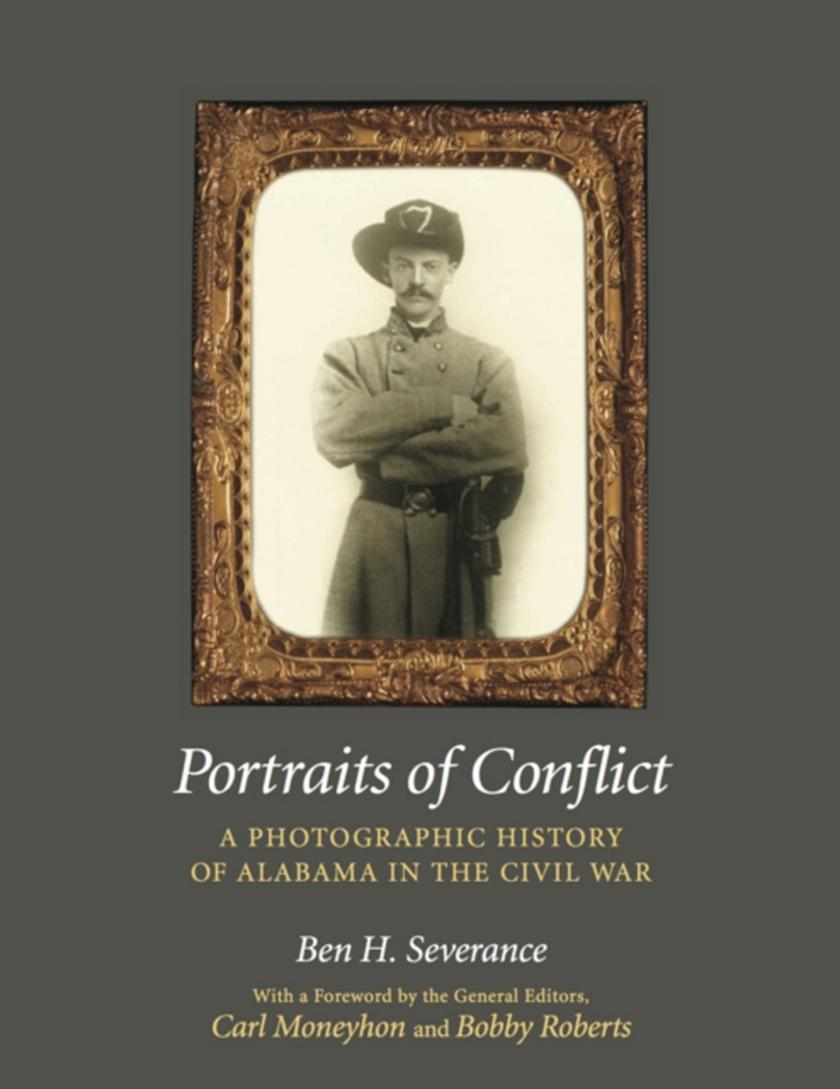
Portraits of Conflict
¥484.91
Portraits of Conflict: A Photographic History of Alabama in the Civil War is the tenth volume in this acclaimed series showing the human side of the country's great national conflict. Over 230 photographs of soldiers and civilians from Alabama, many never seen before, are accompanied by their personal stories and woven into the larger narrative of the war both on the battlefield and the home front. Alabama is unusual among the Rebel states in that, while its people saw little fighting inside its boundaries, nearly one hundred thousand Alabamians served with Confederate units throughout the South. This volume chronicles their experiences in almost every battle east of the Mississippi River--especially at Sharpsburg, Chancellorsville, and Gettysburg under the legendary Robert E. Lee; at Murfreesboro and Chickamauga as part of the ill-fated Army of Tennessee; and at the famous siege of Vicksburg. Ultimately Union soldiers did invade the state, and Alabamians defended their homeland against enemy cavalry raiders at Selma and against Federal warships in the fight for Mobile Bay. The volume also includes accounts of some of Alabama's leading politicians as well as several of its more ordinary citizens. This new volume contains the same quality of photography and storytelling that has attracted Civil War enthusiasts since the first volume was published in 1987, making it another welcome addition to the series Civil War History called "e;a sensibly priced, beautifully produced photographic history."e;

Just Below the Line
¥372.78
With America on the brink of the largest number of older adults and persons with disabilities in the country's history, the deceleration in housing production during the first decade of the twenty-first century, and a continued reliance on conventional housing policies and practices, a perfect storm has emerged in the housing industry. The lack of fit between the existing housing stock and the needs of the U.S. population is growing pronounced. Just as housing needed to be retooled at the end of WWII, the American housing industry is in dire need of change today. The South-with its high rates of poverty, older residents, residents with disabilities, extensive rural areas, and out-of-date housing policies and practices-serves as a "canary in the coal mine" for the impending, nationwide housing crisis. Just Below the Line discusses how reworking the policies and practices of the housing industry in the South can serve as a model for the rest of the nation in meeting the physical and social needs of persons with disabilities and aging boomers. Policy makers, designers, builders, realtors, advocates, and housing consumers will be able to use this book to promote the production of equitable housing nationwide.Published in collaboration with the Fay Jones School of Architecture.
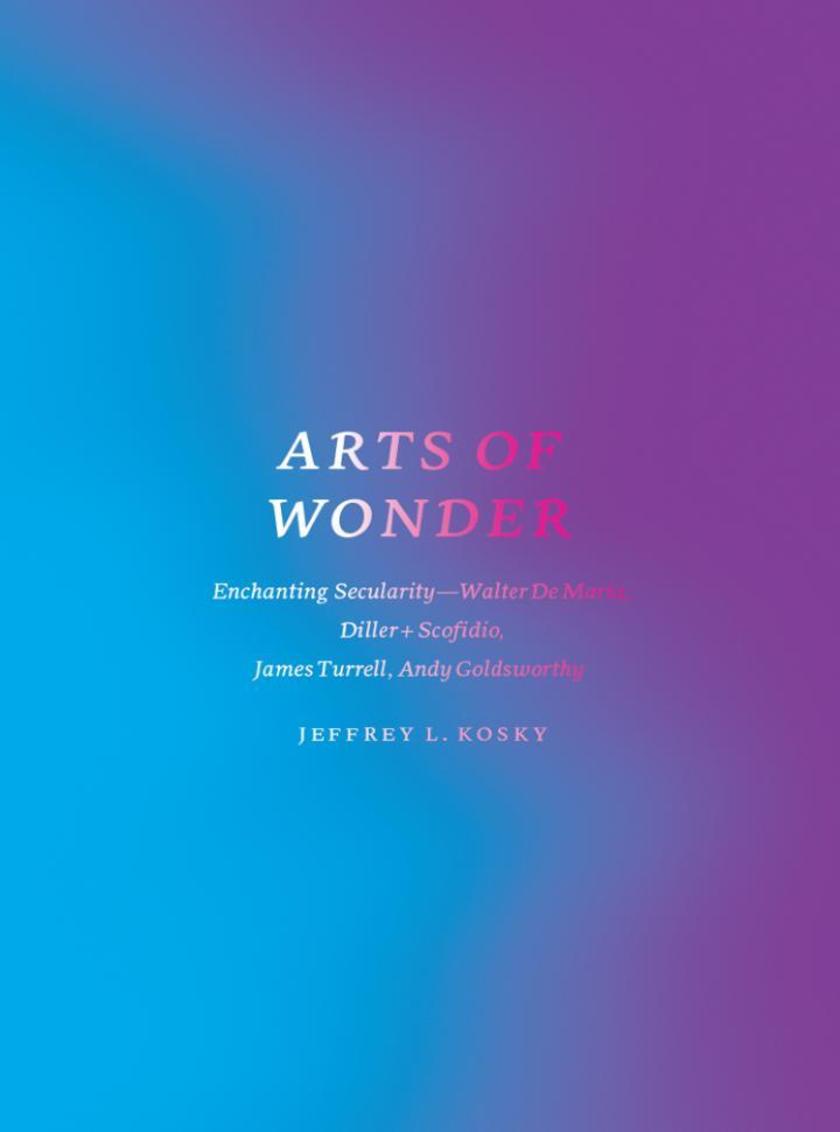
Arts of Wonder
¥353.16
"e;The fate of our times is characterized by rationalization and intellectualization and, above all, by 'the disenchantment of the world.'"e; Max Weber's statement remains a dominant interpretation of the modern condition: the increasing capabilities of knowledge and science have banished mysteries, leaving a world that can be mastered technically and intellectually. And though this idea seems empowering, many people have become disenchanted with modern disenchantment. Using intimate encounters with works of art to explore disenchantment and the possibilities of re-enchantment, Arts of Wonder addresses questions about the nature of humanity, the world, and God in the wake of Weber's diagnosis of modernity.?Jeffrey L. Kosky focuses on a handful of artists-Walter De Maria, Diller + Scofidio, James Turrell, and Andy Goldworthy-to show how they introduce spaces hospitable to mystery and wonder, redemption and revelation, and transcendence and creation. What might be thought of as religious longings, he argues, are crucial aspects of enchanting secularity when developed through encounters with these works of art. Developing a model of religion that might be significant to secular culture, Kosky shows how this model can be employed to deepen interpretation of the art we usually view as representing secular modernity. A thoughtful dialogue between philosophy and art, Arts of Wonder will catch the eye of readers of art and religion, philosophy of religion, and art criticism.
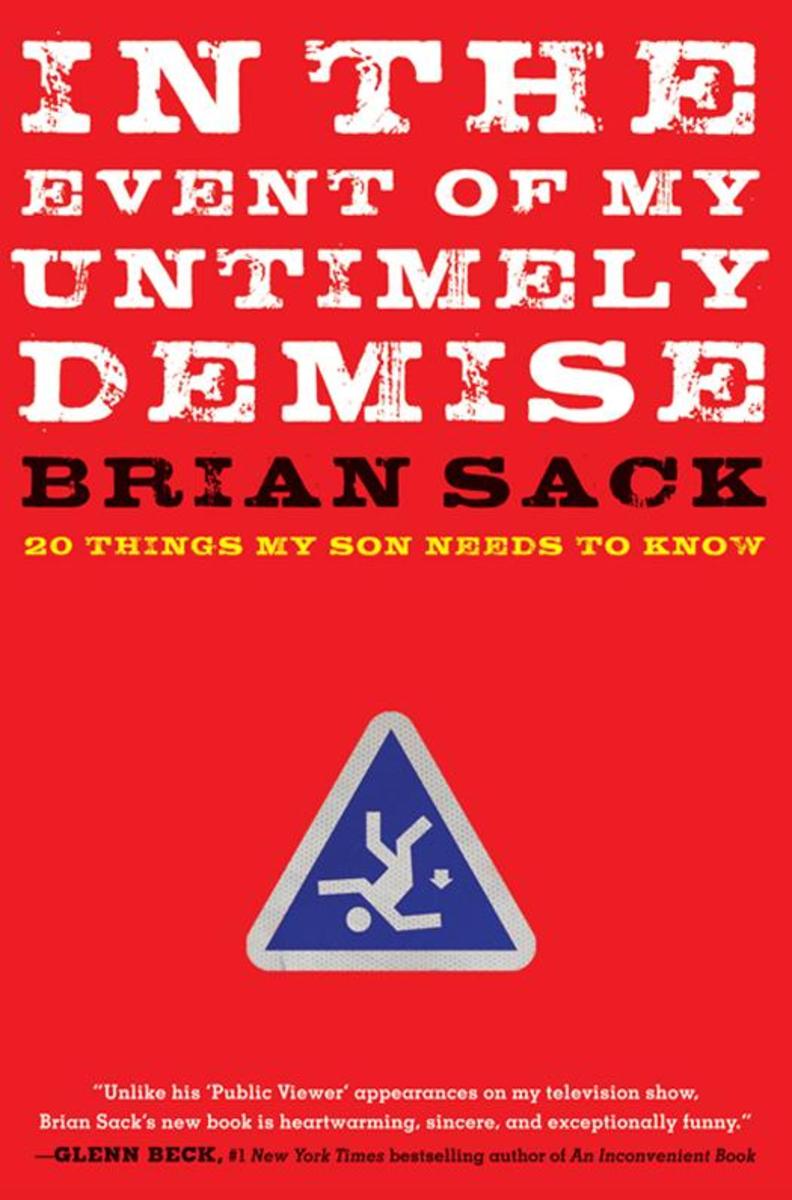
In the Event of My Untimely Demise
¥78.55
When Brian Sack's mother passed away, he was left with a letter and a pink cardigan. The cardigan was promptly placed in a drawer, but the letter was pure gold. In just a few pages of fancy cursive, her posthumous dispatch offered the kind of guidance you would expect from a mother to her young son. And while he didn't necessarily follow all the advice, he never forgot how very important those words and that letter were to him. Decades later, on the verge of parenthood himself, Brian decided to write something for his own child, wanting a legacy, and not just a pink cardigan, to leave to his son. But far from the usual collection of advice, Brian has written a sharp, sage, warts-and-all survival guide to life.With quick wit and self-deprecating honesty, Sack draws from his experiences, tapping them for the humor within. Holding nothing back, he: Gives the skinny on relationships don't let the woman you love wander alone in France Commiserates about the death of the meritocracy wanting to sing doesn't mean you can Recounts his awkward entry into fatherhood you'll overcome your aversion to poo Offers firsthand advice avoid any bipolar lady with a drug-sniffing wonder-cat And argues that the Empire State Building is not a phallic symbol no matter what the professor said Every chapter takes on subjects ranging from the universal and mundane to the life changing and inevitable. With its funny and heartfelt musings from a father to a son, In the Event of My Untimely Demise is a delightful life primer for all of us.
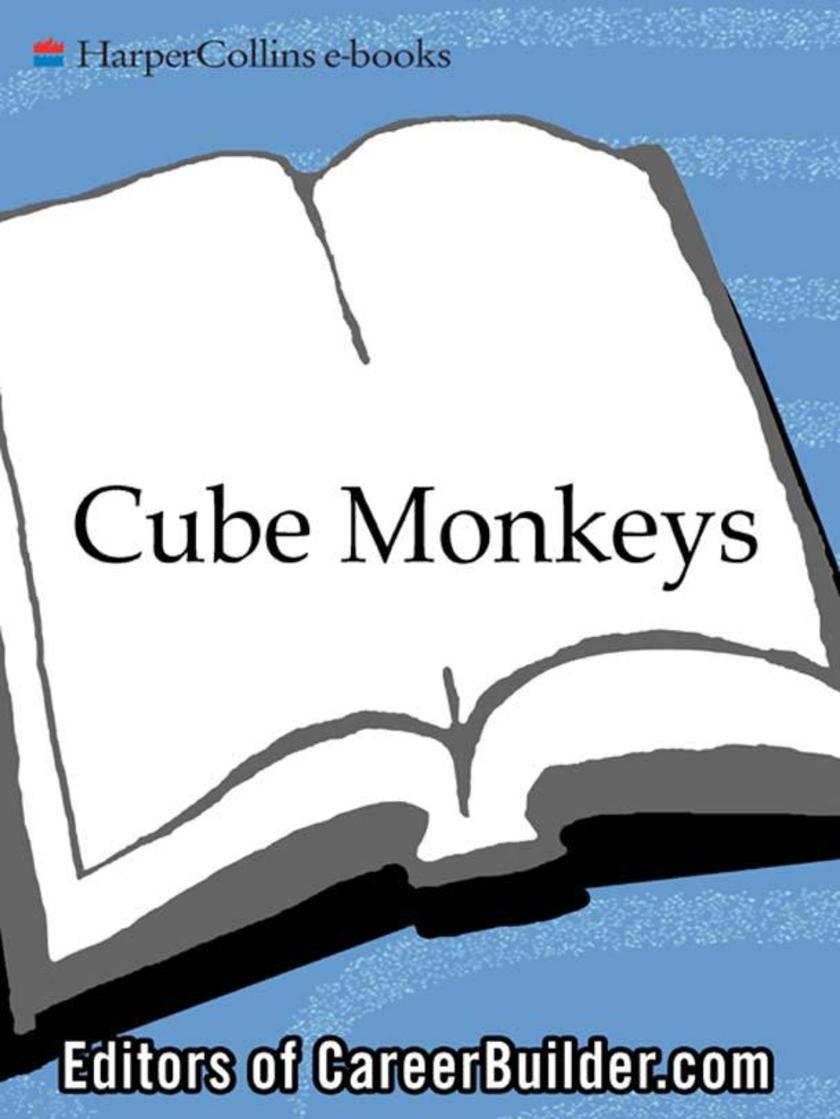
Cube Monkeys
¥78.10
You drag yourself to work wearing your office uniform, complete with khaki pants and sense of impending doom. After grabbing a cup of the office sludge, you settle in with your fellow cube dwellers and wonder: How will I last another day in this freaky corporate jungleCheaper than therapy, Cube Monkeys is your secret weapon to surviving the longest 40 hours of the week. Wanna get the overachieving intern firedDon't know how to tell the Stink Bomb down the hall he needs a scrub a dub dubAfraid you may have told off the boss after your fifth margarita at last night's happy hourNeed a handy list of excuses good for any occasionLook no further. The editors of CareerBuilder.com and Second City Communications have answers to your most pressing office survival questions, as well as advice, tips, and more to help you make it through the day without killing anyone. (Well, maybe the intern will take a hit. But that little snitch had it coming.)
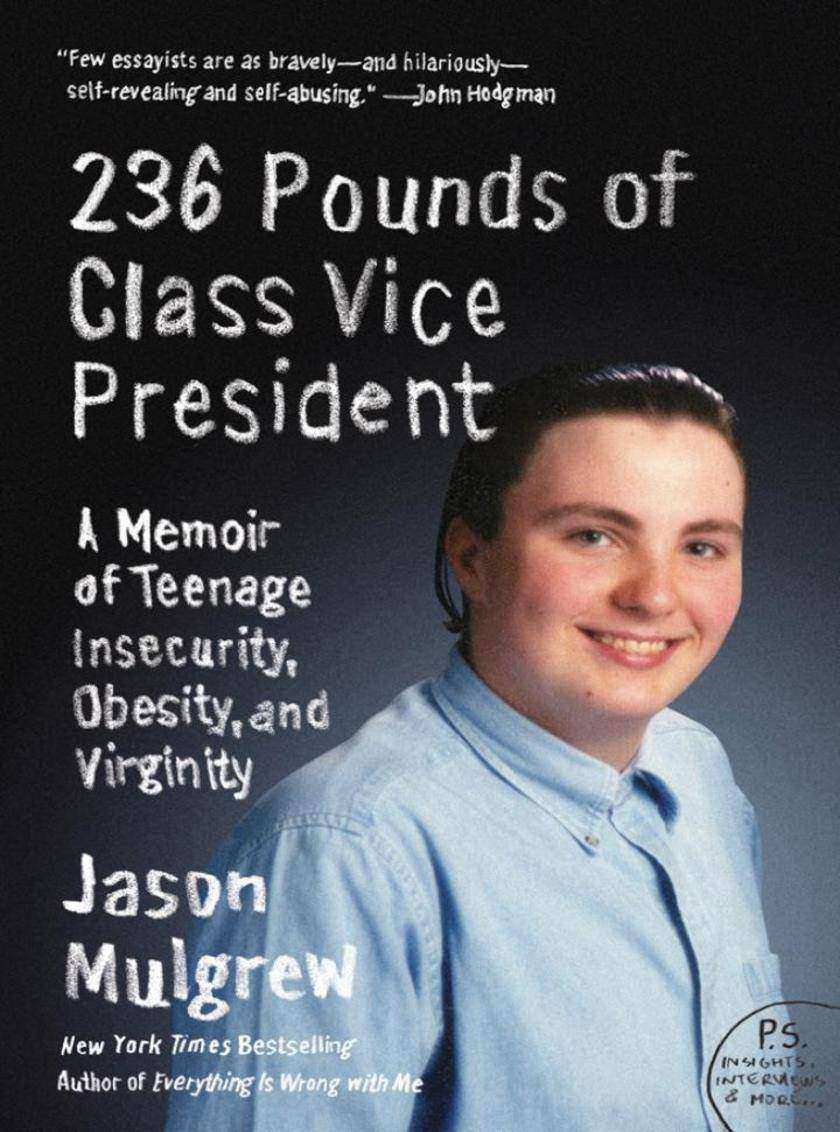
236 Pounds of Class Vice President
¥84.16
When Jason Mulgrew enrolls in a private high school in an exciting new neighborhood (North Philly, murder center of the city), he finds himlf displaced into a world of privilege and strict standards. His classmates, whose parents are lawyers and bankers, live in houses with yards and pools. Mulgrew, whose longshoreman father bought him a motorcycle upon completion of his driver's test, struggles to relate in this wider world, fighting his way through the gauntlet of high school as an awkward, sexless giant. Mulgrew tackles the glorious complications, misapprehensions, and obsessions of the teenage mind. He revisits his unhealthy fixations on dogs, his "bird," the Prep, friends who are girls, Kahlúa & Cream, and a certain position in student body government to craft yet another raunchy, honest, and relentlessly funny memoir.

How to Eat Like a Child
¥90.77
Universal and timeless, Delia Ephron's How to Eat Like a Child is a delightful revisiting of the joys -- and tricky ploys -- of childhood. Made into a children's television special and a musical theater revue performed across the country each year, How to Eat Like a Child offers advice beyond the artful etiquette of food consumption. Ephron also teaches us "How to Laugh Hysterically," "How to Have a Birthday Party," "How to Torture Your Sister," and much, much more. As the Washington Post Book World noted, `After the giggles of recognition have subsided, one thing will be very clear: all adults are kids in grown-ups' clothing."
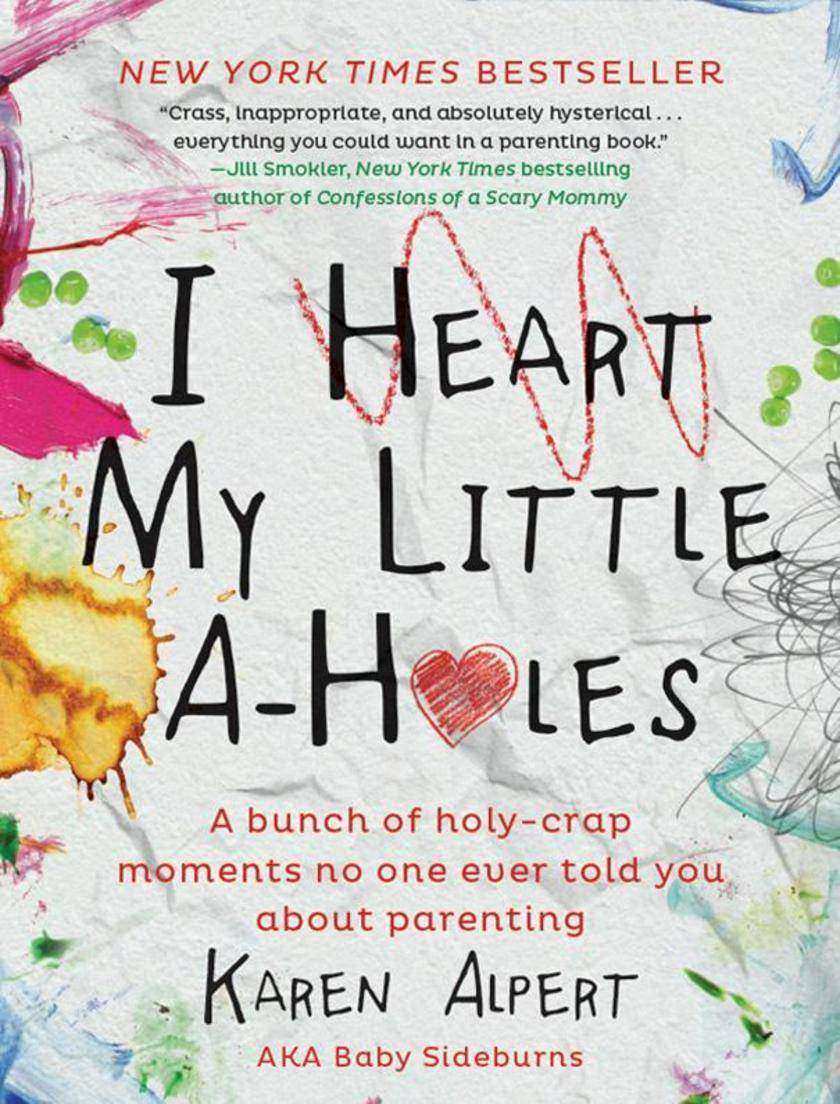
I Heart My Little A-Holes
¥94.10
Popular blogger Karen Alpert shares her hysterical take on the many "joys" of parenting I Heart My Little A-Holes is full of hilarious stories, lists, thoughts and pictures that will make you laugh so hard you'll wish you were wearing a diaper.
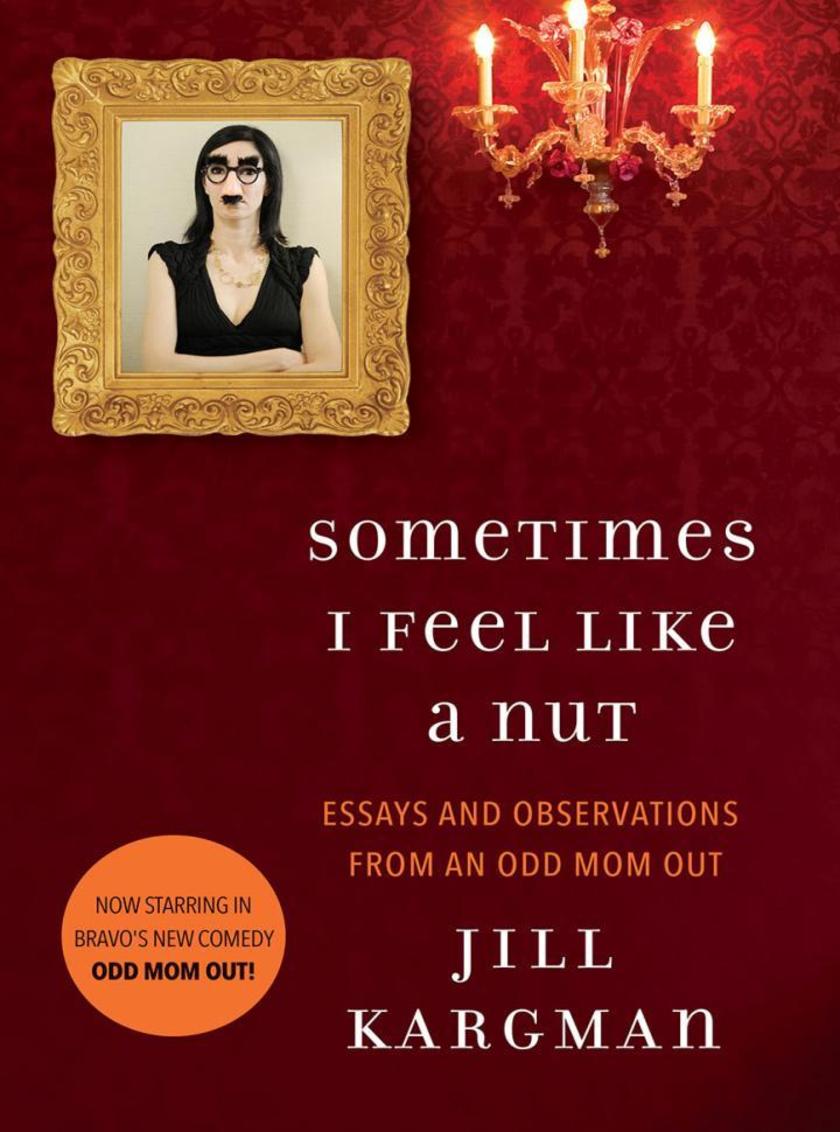
Sometimes I Feel Like a Nut: Essays and Observations From An Odd Mom Out
¥110.71
Demonstrating Woody Allen's magical math equation, comedy = tragedy + time, a sensational collection of witty essays about life, love, hate, kids, work, school, and more from the author of The Ex-Mrs. Hedgefund and Arm Candy Jill Kargman is a mother, wife, and writer living the life in New York City . . . a life that includes camping out in a one-bedroom apartment with some unfortunate (and furry) roommates, battling the Momzillas of Manhattan, and coming to terms with her desire for gay men. In this entertaining collection of observations, Kargman offers her unique, wickedly funny perspective as she zips around Manhattan with three kids in tow.Kargman tackles issues big and small with sharp wit and laugh-out-loud humor: her love of the smell of gasoline, her new names for nail polishes, her adventures in New York City real estate, and her fear of mimes, clowns, and other haunting things. Whether it's surviving a family road trip or why she can't stand Cirque du So Lame, living with a mommy vagina the size of the Holland Tunnel or surviving the hell that was her first job out of college, Kargman's nutty self triumphs, thanks to a wonderfully wise outlook and sense of fun that makes the best of everything that gets thrown her way. And if that's not enough, Kargman illustrates her reflections with doodles that capture her refreshing voice.
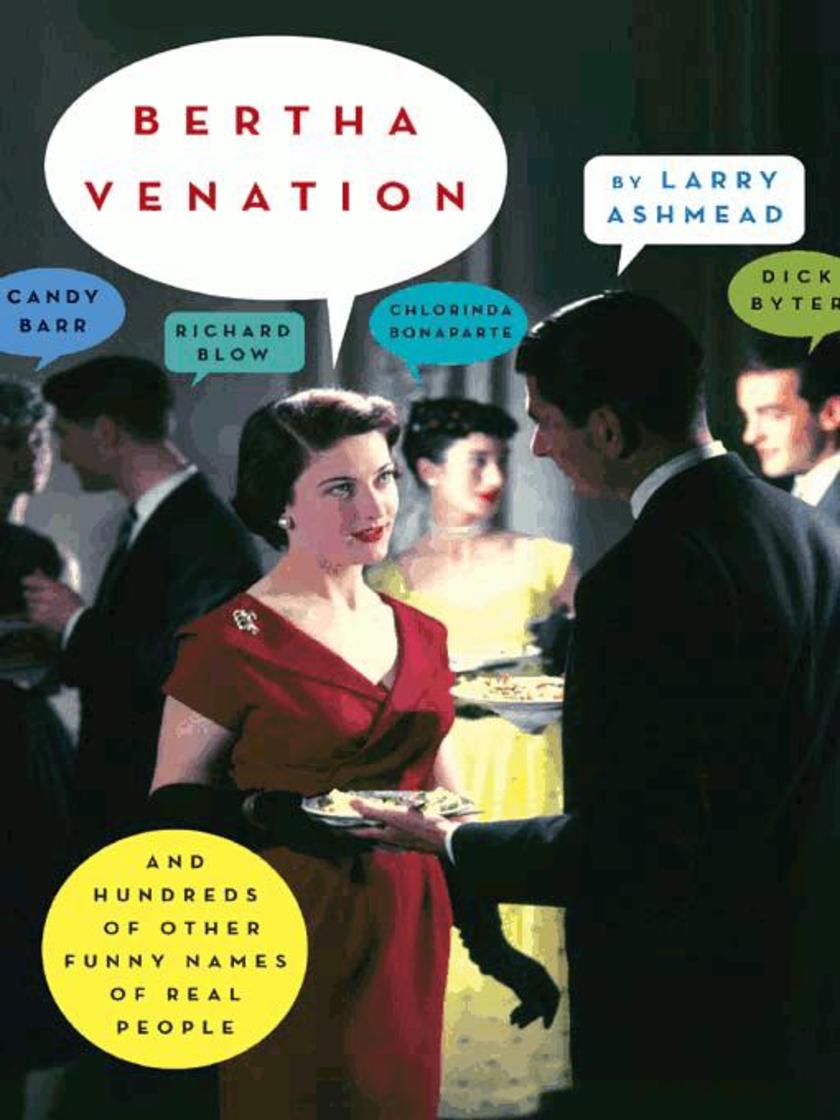
Bertha Venation
¥84.05
An ideal gift book with personality and charm, Bertha Venation is a legendary editor's lifetime collection of the amazing names of actual people, with his own inimitable wit, commentary, and stories.Roger Gotobed . . . Ida Slaptor . . . Formica Dinette . . . Honeysuckle Weeks . . . Gay Beach . . . Sappho Clissit . . . Dimple MysteryThis colorful collection of extraordinary names, sure to please every lover of miscellany, features: Celebrity Children, Weirdest Names in Sports, Aptly Named Professionals, Literary Highlights, Funny Name Marriages, Places and Houses with Strange Names, Long and Meaningless Names, and Pets.Barbara Fatt Heine . . . P. Enis . . . Razzle and Dazzle . . . Moondog . . . Casa Enima . . . Phydeaux . . . Phat Ho . . . Fitz Funfrock . . . Mone't Elysea Ann . . . and Lake Chargoggagoggmanchauggagoggchaubunagungamaugg

When Did I Get Like This?
¥83.03
When Did I Get Like Thisis the hilarious story of one mother's struggle to shrug off the ridiculous standards of modern parenting, and remember how to enjoy her children Over the last seven years of long days with little children, I have had many moments of joy, calm, and peaceful reverie.This book is about the other moments.Before I became a mother, failing at something did not shake my fundamental belief in my capabilities as a human being. But now that I am the mother of three children under the age of seven, I have one overriding daily thought: I suck at this.What kind of mother feeds her kids dinosaur chicken nuggetsThree times a weekWhat kind of mother lets hand washing after using the toilet slide, as long as it was just Number OneAnd then I wonder: When did I get like thisWhy do I doubt my parenting abilities, day after dayWhy does motherhood, a job as old as Eve, have me teetering daily on the edge of sanity?With each new stage of motherhood, I tell myself I will never again be suckered by the question, "Don't you want what's best for your children?" And yet, time after time, I am. Sometimes, I am right to obsess. Other times, the record will show, it has been distinctly counterproductive.I'm working on it . . .
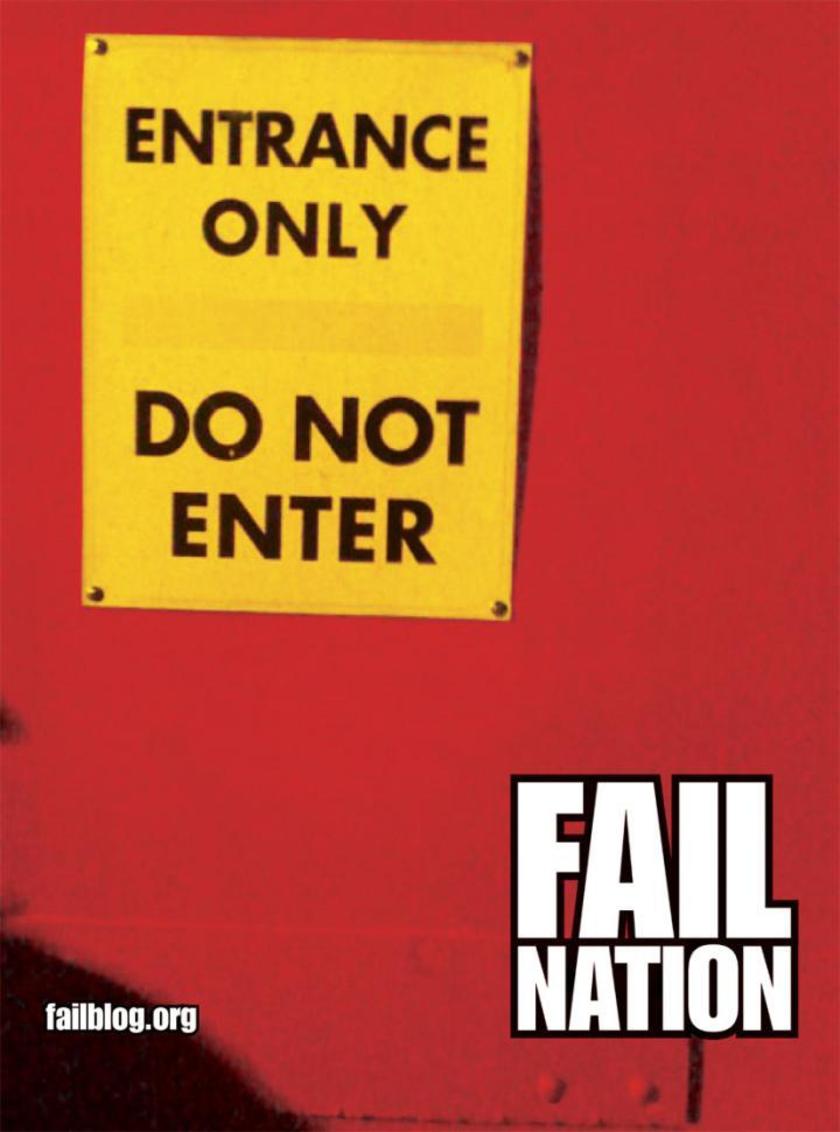
Fail Nation
¥73.03
From the underbelly of the nuts behind hit websites failblog.org and icanhascheezburger.com comes FAIL Nation, your silent guide and handler to the not-even-close-to-perfect nation of FAIL, chock-full of irrelevant tips and useless suggestions about why to shop, who to eat, and when to see. So fasten your exit and check for the nearest seatbelt your FAIL plane departs now.

Today I Am a Ma'am
¥121.85
Valerie Harper has a message for women of a certain age: "Work those laugh lines!" With the irreverence and wit that made her one of television's most beloved personalities, Harper (a.k.a. Rhoda Morgenstern) takes on those phony "fabulous at 50" books written by women whose skin is free of laugh lines and who wouldn't know a cellulite pocket if it bit them on the backside. With her trademark shoot-from-the-hip, call-'em-like-she-sees-'em style, she helps women celebrate, with humor and grace, what it means to be middle aged. Harper's essays explore the treacherous terrain women must travel -- from the tyrannies of fashion to the unmentionables of menopause. She tackles the most perplexing questions of the day: If you wear a size zero, do you existWould menopause be revered if it happened to menDo calories count if you eat standing upAre dressing rooms fitted with fun house mirrorsToday I Am a Ma'am is the perfect antidote to the youth obsession of our culture, offered by America's most reliable girlfriend. It is Humor Replacement Therapy for midlife women, a book you can pick up when ever you need a laugh or a reminder that midriff drift is not the end of the world.
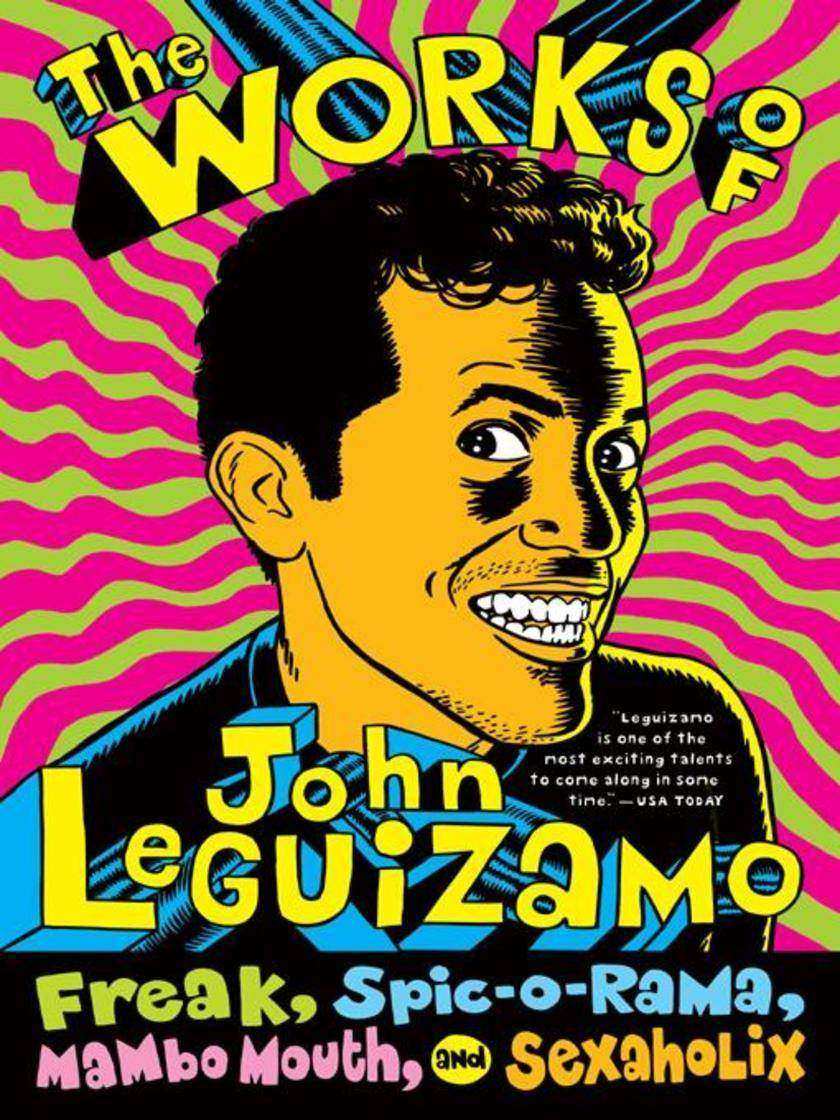
The Works of John Leguizamo
¥94.10
John Leguizamo's smash–hit one–man shows have been acclaimed by critics and fans alike. In this new Harper Paperback edition, all four shows are compiled into one phenomenally entertaining volume. Mambo Mouth (1991), Leguizamo's first show, was an off Broadway sensation. Leguizamo's portrayal of seven different Latino characters earned him both Obie and Outer Critics Circle awards. His follow up, Spic–O–Rama (1993), a "dysfunctional family comedy," presents 24–hours in the life of one family. It enjoyed a sold–out run in Chicago before relocating to New York where it won its creator a Drama Desk Award. Freak (1998), Leguizamo's Broadway debut, is his own coming–of–age story. A "demi–semi–quasi–pseudo–autobiography," the show was a critical and commercial success and won an Emmy when it was shown on TV. Sexaholix: A Love Story (2001), based on the sold–out national tour of John Leguizamo Live! was nominated for an Outer Critics Circle Award as well as a Tony Award. Alternately hilarious and poignant, always candid and searingly intelligent, The Works of John Leguizamo is a must–have for fans of this inimitable performer.
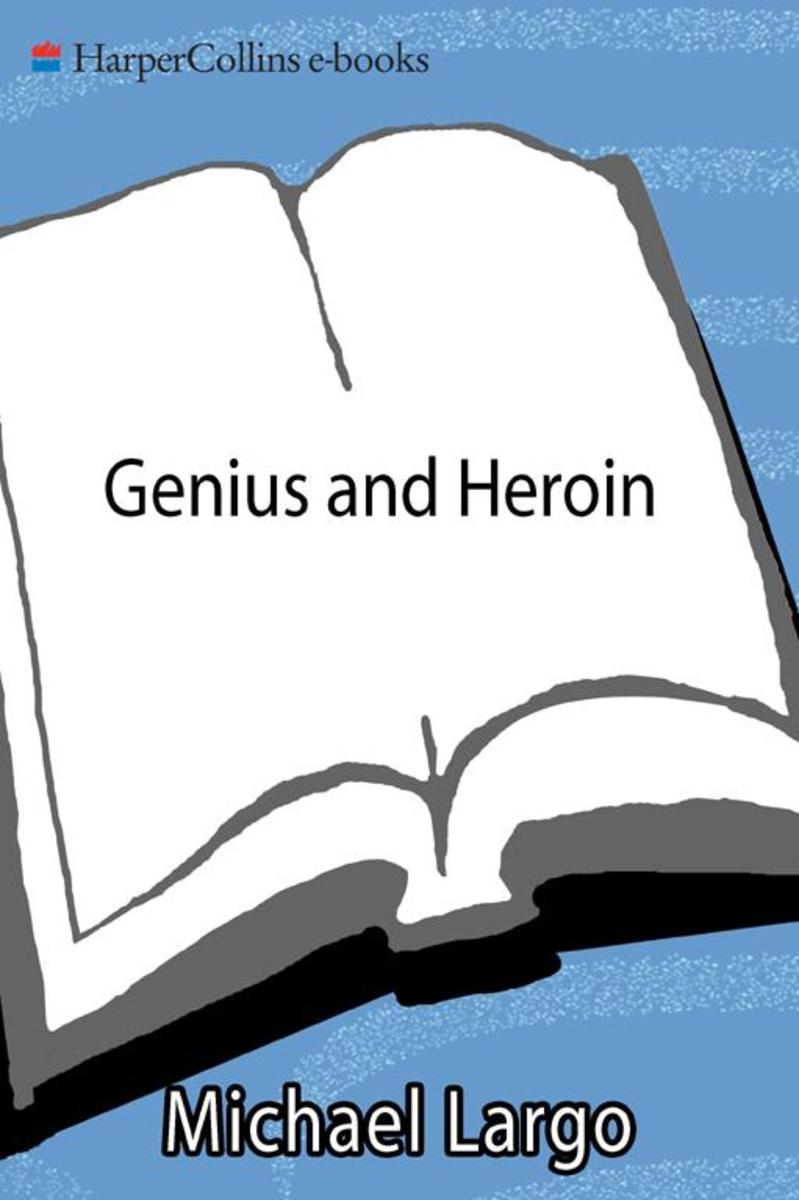
Genius and Heroin
¥95.39
What is the price of brillianceWhy are so many creative geniuses also ruinously self-destructiveFrom Caravaggio to Jackson Pollack, from Arthur Rimbaud to Jack Kerouac, from Charlie Parker to Janis Joplin, to Kurt Cobain, and on and on, authors and artists throughout history have binged, pill-popped, injected, or poisoned themselves for their art. Fully illustrated and addictively readable, Genius and Heroin is the indispensable reference to the untidy lives of our greatest artists and thinkers, entertainingly chronicling how the notoriously creative lived and died whether their ultimate downfalls were the result of opiates, alcohol, pot, absinthe, or the slow-motion suicide of obsession.
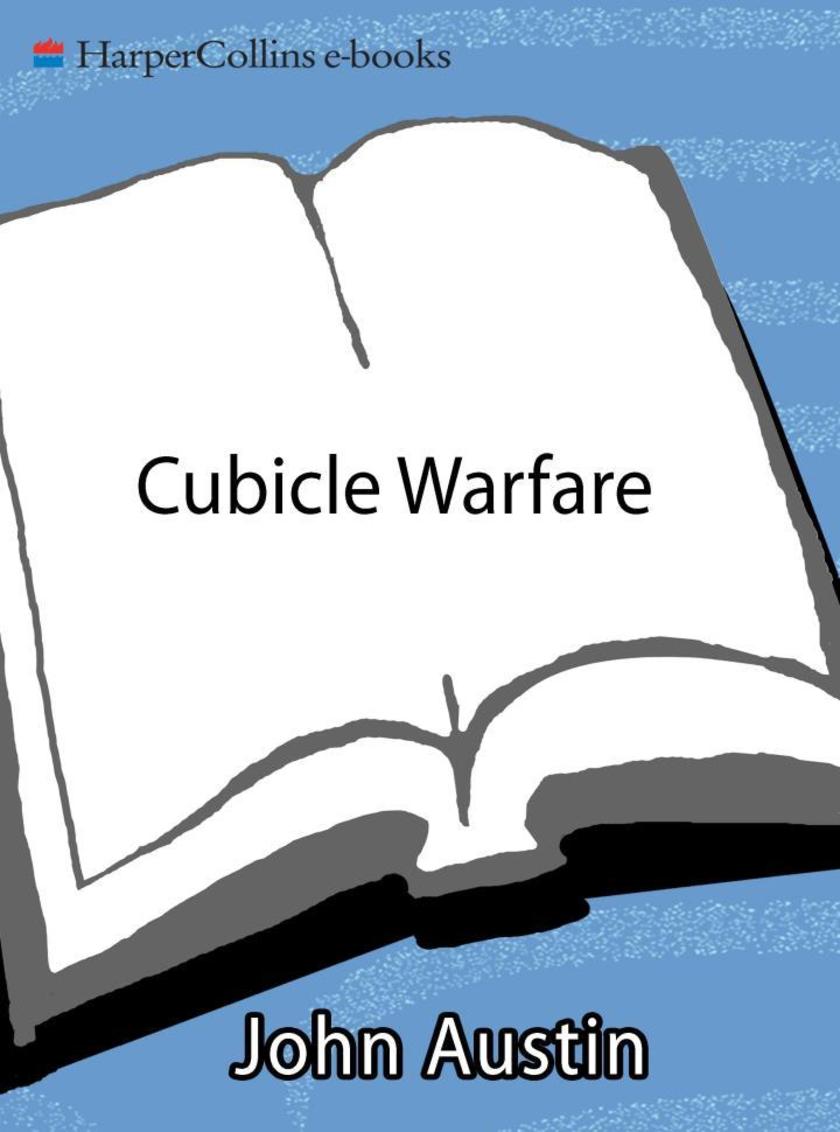
Cubicle Warfare
¥90.77
Get revenge on all your annoying coworkers with this guide to 101 awesome office pranks Are your eyes beginning to glaze over from the fluorescent lights in your tiny cubicleHave you had one too many burnt cups of coffeeDoes the guy in the cube next to you insist on pencil-drumming while cranking "Hells Bells" and five-finger discounting your paper clipsIf your answer to any of these questions is yes, then you're in need of some Cubicle Warfare.With Cubicle Warfare, you'll never be bored at the office again. Make your coworkers jump, squeal, and run for cover with hilarious pranks such as the Paper Clip Chain, Bottomless Box, and the Sticky Note Office, as well as the more advanced Freezer Bomb, Chair Chaos, and Textless Keyboard. Even if you're not a prankster yourself, you can still use this riotous guide to recognize the warning signs and defend your desk from conniving coworkers. Bad days at the office will be a thing of the past.
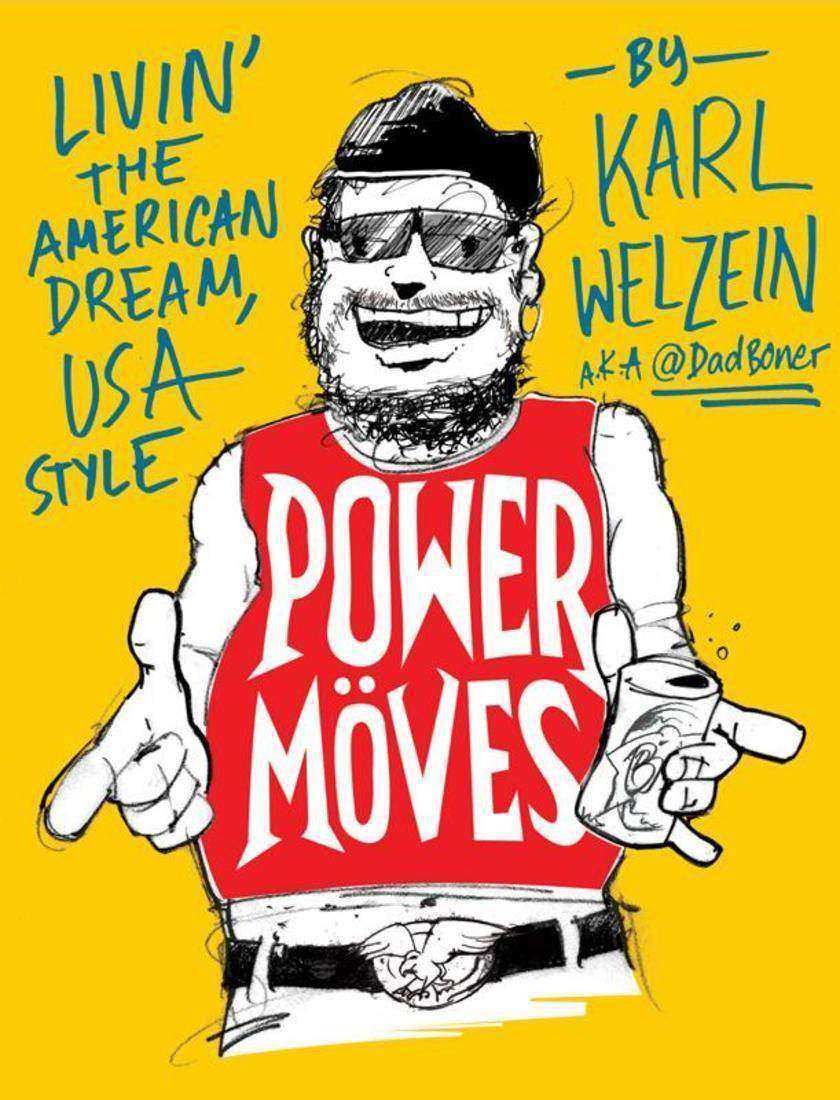
Power Moves
¥90.90
Meet Karl Welzein, aka Captain Karl, aka @DadBoner on Twitter—the Midwest's most beautiful loser Karl Welzein is really lookin' forward to the weekend, you guys. His job is a drag and his wife kicked him out, but that's okay. She wears granny panties and is constantly dropping wads of cash at Target, and his son cries all the time. Now his "temporary" roommate, Dave, ate all the Totino's pizza rolls. Again. Karl Welzein is sick of this. So sick of this. Power Moves chronicles the hilarious decline of Karl Welzein on his journey from life as a Dockers-and-golfshirt-wearing dad to a ponytailed party maniac who spits out his life philosophies like a modern-day Charles Bukowski (if he preferred to get drunk at Applebee's). A middle-aged Michigan native, Karl may be overweight, prone to questionable fashion and culinary choices, oblivious to his drinking problem, a poor excuse for an employee, obsessed with the restroom, and a terrible husband, father, and friend . . . but in his heart he means well. He's just like a lot of us—he loves the USA, Guy Fieri, bold flavors, Bob Seger, and thinking he looks jacked in a tight tee and Maui Jim sunglasses. Karl is an everyman and like no other man on the planet all at once. Inspired by the Twitter feed @DadBoner, Karl finally tells his full story. He shares his wisdom on fitness (1. Look at a pic of Stone Cold Steve Austin. 2. Do 'shups 'til you look like Stone Cold. 3. Cut off your sleeves), diet (Eat only the filling of the Taco Bell Beefy Melts for maximum flavor and low-carb health), fashion (Wearin' boots with jean shorts says "I like to keep cool, but I'm ready if the action gets hot"), work life (If you don't have a job that makes you want to kill yourself, you don't deserve to drink until you want to die), and the bliss of the perfect weekend (beers, brats, and babes' chest beefers). But above all, this is a story about America—the real red, white, and blue America of today. Welcome to Karl's world. Reading this book is the ultimate Power Move.

Dump 'Em
¥90.77
Everybody has that special someone in their life that they can't wait to get rid of. Whether it's a housekeeper, a therapist, or a personal trainer, the time comes when you have to pull the plug on the relationship.Featuring personal stories, useful *s, and interviews with experts such as Bob Harper from The Biggest Loser, funnyman Adam Carolla, and Michael Jackson's attorney, Thomas Mesereau, Dump 'Em is a practical guide for giving any bad relationship the boot. Jodyne L. Speyer provides a roadmap to finding your own way of saying "thanks, but no thanks." Written with honesty, empathy, and ruthless wit, Dump 'Em will teach you to conquer your fear of confrontation and master the art of the peaceful and permanent breakup. So what are you waiting forDump 'em!




 购物车
购物车 个人中心
个人中心



